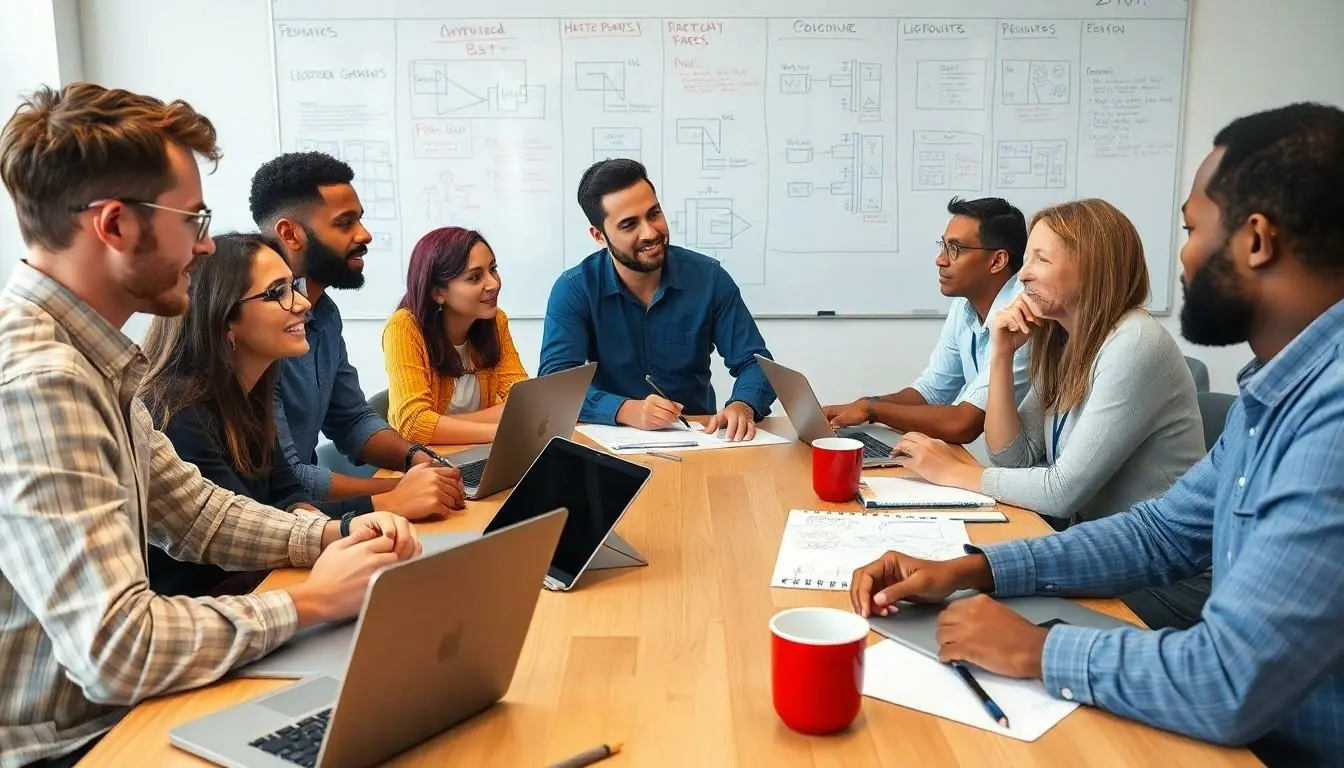Ever wondered how the ChatGPT team pulls off its magic? Picture a group of brainy wizards huddled around a cauldron, brewing up responses that are as insightful as they are entertaining. It’s not quite Hogwarts, but the collaboration and creativity flowing through this team are nothing short of enchanting.
Table of Contents
ToggleOverview of ChatGPT Team Structure
The ChatGPT team thrives on its distinct structure and well-defined roles, fostering creativity and efficiency in producing engaging responses. This organization enhances their collaborative efforts to deliver valuable interactions.
Roles and Responsibilities
Each member of the ChatGPT team contributes specific expertise. Engineers focus on algorithm development, ensuring robust functionality. Designers enhance user experience, making interactions intuitive. Researchers gather data to inform the training process. Writers craft responses, ensuring clarity and relevance. Project managers oversee timelines and resources to keep projects on track. Every role plays a crucial part in the overall success of the ChatGPT initiative.
Collaboration Dynamics
The ChatGPT team embraces collaborative dynamics that prioritize communication. Regular meetings keep everyone aligned on objectives. Feedback sessions encourage improvement and innovation. Collaboration tools streamline processes, allowing real-time updates and sharing of ideas. Flexibility in work schedules supports individual creativity while meeting collective goals. Such dynamics create a thriving environment where creativity flourishes, enabling the team to adjust quickly to user needs.
Development Process

The ChatGPT team employs a structured development process that focuses on creativity and efficiency. Each phase contributes significantly to the overall success of the model.
Idea Generation and Conceptualization
Brainstorming sessions drive idea generation, where diverse perspectives emerge. Team members share insights based on user needs and the latest trends in artificial intelligence. Collective discussions refine concepts, ensuring alignment with user expectations. Concepts evolve into initial designs, setting the framework for future development. Prioritization occurs based on feasibility and potential impact. Insights from research guide the team in selecting concepts that resonate with users.
Iterative Design and Prototyping
Prototyping follows idea generation, emphasizing rapid development and feedback. Designers create wireframes to visualize user interfaces, promoting effective interaction. Engineers then build functional prototypes, allowing for real-world testing. User feedback continues to shape prototypes, leading to enhancements that improve usability. Iterations occur frequently, ensuring alignment with users’ needs and expectations. Results from testing inform further design adjustments, resulting in refined models ready for implementation.
Communication and Coordination
Effective communication and coordination form the backbone of the ChatGPT team’s success. The team utilizes various mechanisms to enhance collaboration and ensure clarity in their collaborative efforts.
Tools and Platforms Used
Collaboration tools streamline workflows and bolster teamwork. Platforms like Slack facilitate real-time communication, while Asana supports project management. Google Drive allows for easy document sharing and version control. These resources unify team efforts, making information readily accessible. Regular use of these tools promotes accountability, ensuring everyone’s aligned with goals and deadlines.
Best Practices for Teamwork
Establishing best practices enhances productivity and morale. Regular check-ins help team members stay informed and address any challenges promptly. Transparent feedback sessions encourage constructive criticism and foster a culture of continuous improvement. Providing clear expectations and roles minimizes confusion and optimizes task execution. Celebrating small wins boosts motivation and reinforces a sense of community within the team.
Innovation and Continuous Improvement
The ChatGPT team thrives on feedback and adaptation. Feedback mechanisms play a key role in the development process. Team members collect input from users through surveys, direct interactions, and analytical tools. Regular analysis of this feedback allows the team to identify areas for improvement. Iterative updates arise from these insights, ensuring the model evolves based on user needs. Each adjustment builds upon the previous version, creating a cycle of ongoing refinement that enhances performance and satisfaction.
User interactions serve as a crucial learning tool. By analyzing conversations, the team gains insights into user preferences and common challenges. Patterns in user behavior often reveal opportunities for new features or improvements. Engaging with users directly through various platforms encourages open dialogue, eliciting valuable suggestions. Every interaction provides the team with actionable data, feeding directly into the development cycle. These learning experiences ultimately shape future versions, optimizing user engagement and overall effectiveness.
The ChatGPT team’s collaborative spirit and structured approach drive its success in creating innovative AI solutions. By combining diverse expertise and fostering open communication, they ensure that each project aligns with user needs. Their commitment to continuous improvement and responsiveness to feedback highlights the importance of adaptability in the fast-evolving world of artificial intelligence. This dynamic environment not only enhances the quality of their work but also cultivates a sense of community among team members. As they continue to refine their processes and embrace user insights, the ChatGPT team remains poised to deliver engaging and effective AI interactions.





